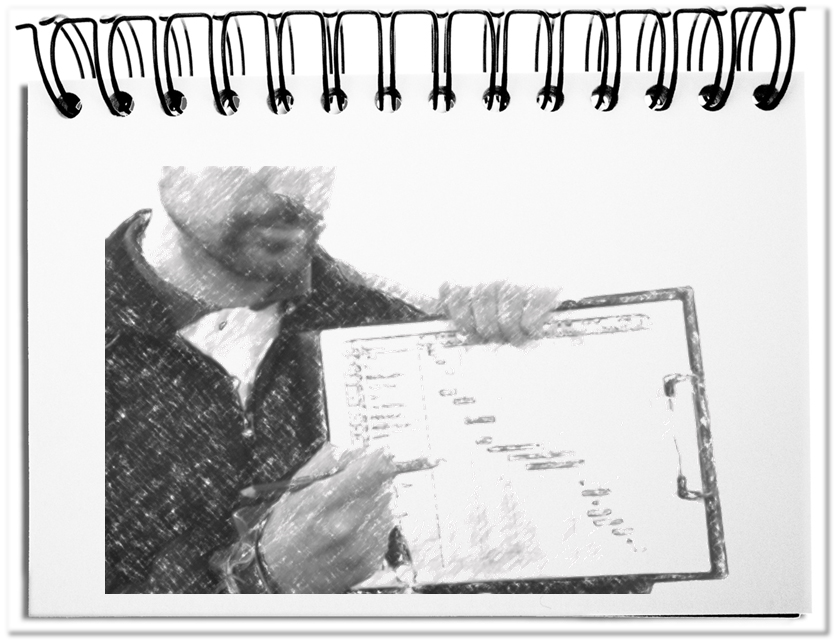Auch wenn das Thema Projektmanagement (PM) mittlerweile viele Aspekte einer einmaligen Unternehmung abdeckt, scheitern immer noch zwei Drittel der Projekte (siehe hier: http://ow.ly/zy5hB ). Vielleicht finden sich trotz der vielen Ansätze immer noch Bereiche, die nicht berücksichtigt werden. Was macht ein Projekt zum Rohrkrepierer?
Ein Blick in die Gilde der Projektmanager liefert ein paar Aspekte, die ein Projekt schnell in Schieflage bringen können.
- Jeden glücklich machen zu wollen
In unserem privaten Leben haben wir gelernt, dass wir nicht alle Menschen glücklich machen können. Nicht weil wir es nicht wollen. Es sind einfach die verschiedenen Interessen, die nicht in Übereinstimmung gebracht werden können. Das ist auch gut so. Schließlich wollen wir alle ja auch verschieden sein. Was hält einen Projektleiter aber davon ab, diese Einsicht auch im Projekt zu nutzen? Es geht nicht darum ALLE glücklich zu machen, sondern einfach die Entscheidenden. - Unfähigkeit in verschiedene Rollen zu schlüpfen
Damit man in der Lage ist die Interessensgruppen zu bedienen, muss man sie zuerst einmal verstehen. Dies kann man dadurch erreichen, dass man sich in die jeweilige Rolle hineinversetzt. Ein indianisches Sprichwort sagt, dass man nicht über einen Anderen urteilen soll, bevor man nicht eine gewisse Zeit in seinen Mokassins gegangen ist. Es geht nicht darum den Anderen zu Kreuze zu kriechen, sondern vor allem, deren Interessen und Gründe zu verstehen und daraus Maßnahmen abzuleiten. - NAIVe Ziele (Neutral – Abstrakt – Irrelevant – Verzichtbar)
Sobald die Ziele des Projekts NAIV formuliert werden, befindet es sich auf dem absteigenden Ast. Neutrale Ziele schaffen keine Energie, da niemand etwas zu gewinnen hat. Werden Sie dann auch noch Abstrakt festgeschrieben, verlässt jegliche Energie das Projekt. Sind die Ziele Irrelevant, weil sie niemand braucht, finden sich keine Sponsoren mehr. Und wenn dann auch noch die Ergebnisse Verzichtbar sind, ist ein guter Moment das Projekt zu stoppen. Es geht nicht darum, komplizierte Ziele zu kreieren, sondern sich SMARTe Ziele zunutze zu machen. - Unentschlossenheit
Ein Projekt ist ein einmaliger, dynamischer Prozess, der in jedem Moment Entscheidungen erfordert. Dies beginnt bereits beim Vorprojekt, in dem die Rahmenbedingungen und groben Ziele formuliert sein müssen. Das setzt sich fort bei der Besetzung der Projektstellen und der Beschreibung des übergreifenden Masterplans. Und dann passieren im Laufe von Projekten unzählige Ereignisse, die häufig schnelle Entscheidungen erfordern. Es geht nicht darum, ohne Nachzudenken Entscheidungen zu treffen, sondern darum, eine Vorliebe für Entscheidungen zu entwickeln, die zu schnellen Ergebnissen führt. - Risikovermeidung
Bei allen Aktivitäten, die in die Zukunft gerichtet sind, ist es unvermeidlich, Risiken einzugehen. Beim Autofahren lauern an jeder Kreuzung Situationen, die man nicht vermeiden kann. Überängstliche nähern sich der Kreuzung darum immer mit äußerster Aufmerksamkeit in alle Richtungen. Dadurch behindern sie den normalen Verkehrsfluss und kommen nur schleppend voran. Es geht nicht darum bei jeder Entscheidung alle Eventualitäten abschätzen zu wollen, da immer ein Restrisiko bleibt. Es ist geschickter die eigene Risikoschwelle anzuheben. - Fehlender Überblick
Wenn schließlich der Überblick über das Geschehen fehlt, ist man mit zweihundert im Nebel unterwegs. Es ist dann nachvollziehbar, dass das nächste auftauchende Hindernis im Nebel den Fortgang des Projekts blockiert. Es geht nicht darum alle Details zu kennen, sondern dass man die einzelnen Projekte mit ihren Aufgaben, den gegenseitigen Abhängigkeiten und Engpässen kennt.
Fazit: Ohne ordentliches Projektmanagement geht nichts. Aber wenn die obigen Aspekte vorliegen, dann nützt die ganze Administration der Projektinhalte nichts. Da es sich um den Projektleiter dreht, ist es hilfreich, bereits bei der Besetzung der Rolle, diese Qualitäten abzuprüfen. Lieber einen weniger ordentlichen Projektleiter, der entsprechend funktioniert, als einen ordentlichen, der das Projekt zu 70% an die Wand fährt.

